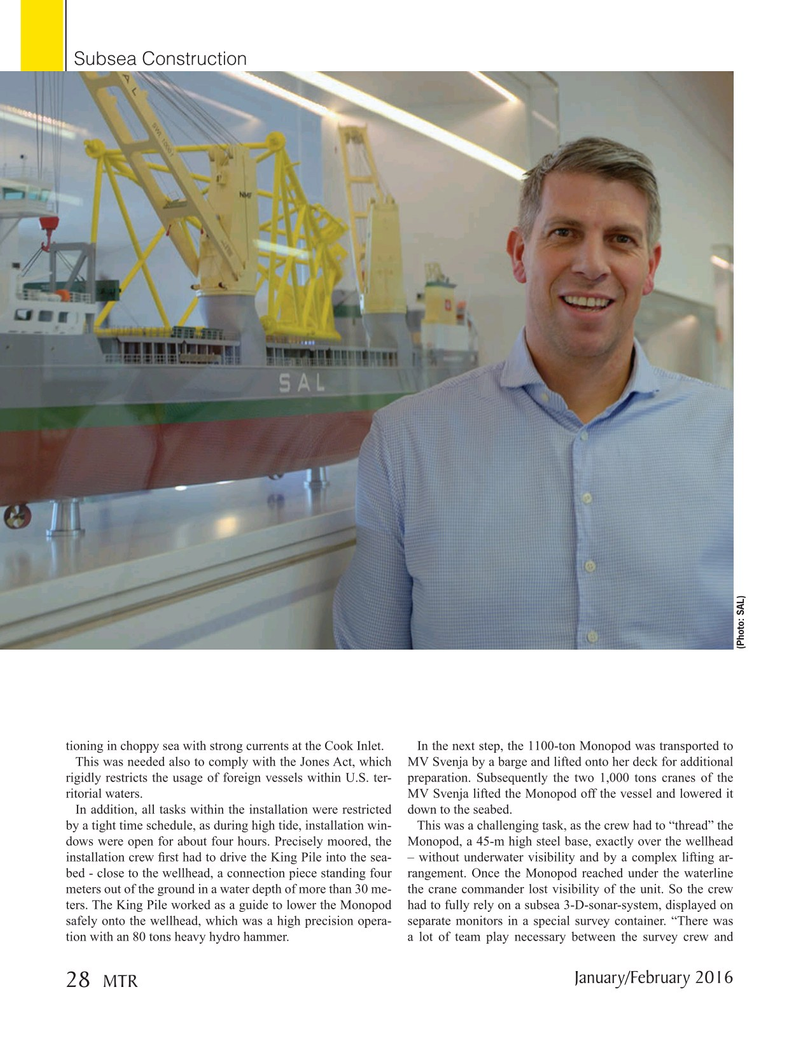
Page 28: of Marine Technology Magazine (January 2016)
Underwater Vehicle Annual: ROV, AUV, and UUVs
Read this page in Pdf, Flash or Html5 edition of January 2016 Marine Technology Magazine
Subsea Construction (Photo: SAL) tioning in choppy sea with strong currents at the Cook Inlet. In the next step, the 1100-ton Monopod was transported to
This was needed also to comply with the Jones Act, which MV Svenja by a barge and lifted onto her deck for additional rigidly restricts the usage of foreign vessels within U.S. ter- preparation. Subsequently the two 1,000 tons cranes of the ritorial waters. MV Svenja lifted the Monopod off the vessel and lowered it
In addition, all tasks within the installation were restricted down to the seabed. by a tight time schedule, as during high tide, installation win- This was a challenging task, as the crew had to “thread” the dows were open for about four hours. Precisely moored, the Monopod, a 45-m high steel base, exactly over the wellhead installation crew ? rst had to drive the King Pile into the sea- – without underwater visibility and by a complex lifting ar- bed - close to the wellhead, a connection piece standing four rangement. Once the Monopod reached under the waterline meters out of the ground in a water depth of more than 30 me- the crane commander lost visibility of the unit. So the crew ters. The King Pile worked as a guide to lower the Monopod had to fully rely on a subsea 3-D-sonar-system, displayed on safely onto the wellhead, which was a high precision opera- separate monitors in a special survey container. “There was tion with an 80 tons heavy hydro hammer. a lot of team play necessary between the survey crew and
January/February 2016 28
MTR
MTR #1 (18-33).indd 28 1/21/2016 2:55:07 PM

 27
27

 29
29
